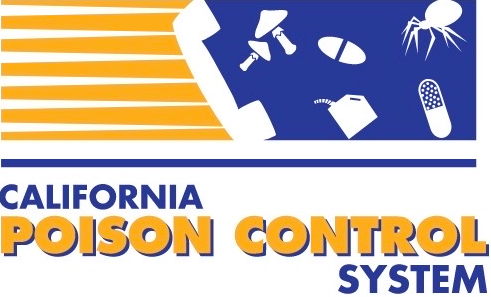Updated April, 2023 by Nathan Friedman, MD
Original author Stephen Thornton, MD
Introduction
β-adrenergic antagonists (beta-blockers; BBs) are commonly used for treatment of hypertension, coronary artery disease, and tachydysrhythmias. β-adrenergic antagonists have also been used to treat congestive heart failure, glaucoma, migraine headaches, benign essential tremor, panic attacks, stage fright, and hyperthyroidism. There were approximately 10,000 exposures reported nationally to poison centers in 2015. Propranolol accounts for a disproportionate number of fatalities and severe morbidity, likely due to its increased toxicity compared to other BBs and its use in patients with anxiety and stress.
Case presentation
A 65-year-old woman presented to the emergency department 3 hours after an intentional ingestion of her propranolol. Her heart rate was 35 beats per minute and her blood pressure was 80/40 mm Hg. She was somnolent and confused. The patient received intravenous glucagon 1 mg with no improvement in her hemodynamics. A second dose of intravenous glucagon 5 mg was administered. The patient’s heart rate improved to 50 beats per minute and her blood pressure increased to 90/50 mm Hg.
Questions
- What is the pathophysiology of BB toxicity?
- What are the clinical presentations of BB toxicity?
- What are the treatment options for BB toxicity?
Pathophysiology
β-adrenergic antagonists antagonize the chronotropic and inotropic response to catecholamines at the cardiac β-adrenergic receptors. BBs decrease inotropy through interference with the pathways involving cAMP. β-agonists bind to Gs proteins that activate adenylyl cyclase, leading to the increase of intracellular production of cAMP. Increased cAMP levels activate protein kinase A, resulting in phosphorylation of myocyte proteins such as L-type calcium channels, phospholamban, ryanodine receptors, and troponin. By antagonizing the β-adrenergic receptor and interfering with activation of cAMP, BBs produce their desired effect. Toxic effects are largely an extension of therapeutic effects. Hypoglycemia is also possible, especially in diabetics and patients with impaired or low glycogen stores (children).
Propranolol and sotalol, in addition to acting as β-adrenergic receptor antagonists, also possess quinidine-like membrane-stabilizing properties via sodium channel blockade. In overdose, they can produce ventricular dysrhythmias (besides the expected bradycardia) and seizures. Antagonism of β-adrenergic receptors outside the cardiovascular system can produce additional effects including bronchospasm.
Clinical Presentation
The cardiac presentation of β-adrenergic antagonist toxicity is an extension of the therapeutic effects. Symptoms of toxicity typically occur within 2 hours of ingestion of immediate-release products. With extended-release products patients may have a delayed presentation extending out to 6 hours. Hypotension and bradycardia are common features of BB overdose. Hypotension occurs through the negative inotropic effect. Decreased SA node function results in sinus bradycardia. Impaired AV conduction can lead to varying AV blocks. Severe BB toxicity may result in cardiovascular collapse and asystole. Hypoglycemia may occur and is more common in children with BB toxicity. Bronchospasm is relatively uncommon after BB overdose but is possible especially in patients with underlying COPD.
Propranolol is a unique BB with increased toxicity due to its lipophilic and membrane-stabilizing properties. In addition to hypotension and bradycardia, prolonged QRS interval, seizures, and coma may also occur.
Sotalol causes prolongation of the QT interval via inhibition of inward rectifier potassium channels. Toxicity can be delayed and prolonged, and may result in ventricular dysrhythmias, including torsades de pointes.
Diagnosis
β-adrenergic antagonist toxicity should be considered in patients who present with hypotension and bradycardia. A careful history should be gathered, including asking about eye drops. The differential diagnosis should include toxicity from calcium channel blockers, α-2 agonists, and digoxin. Other toxic causes of bradycardia and hypotension include GHB and its analogues, cholinergic crisis, grayanotoxin, and some other sodium channel blockers. All patients with an intentional overdose of a BB should have a 12-lead EKG and continuous cardiac monitoring with pulse oximetry performed. Laboratory testing should include serum electrolytes, serum glucose concentration, BUN, creatinine, and digoxin level. Serum concentrations of BBs are not readily available for routine clinic use.
Treatment
Initially, management for β-adrenergic antagonist toxicity includes airway management and continuous cardiac monitoring. GI decontamination should be considered in individuals without a contraindication such as altered mental status or vomiting. Activated charcoal should be considered if a patient presents within 1-2 hours of ingestion. Whole bowel irrigation with polyethylene glycol should be considered in patients who have ingested large quantities of sustained release preparations. In patients with propranolol or sotalol overdose and widened QRS, sodium bicarbonate should be administered. Convulsions from propranolol overdose may be treated with benzodiazepines and sodium bicarbonate. QT prolongation from sotalol should be expected and managed with IV magnesium sulfate. Torsades de pointe, if it develops, may require chemical or electrical overdrive pacing.
Bradycardia
The initial treatment for bradycardia remains atropine, although the clinical should expect treatment failure. In patients who fail to respond to atropine, glucagon administered as a 5-10 mg IV bolus should be administered, followed by an intravenous infusion at the last effective dose given per hour. For instance, if hemodynamic improvement was seen with 5mg IV push, an infusion can be initiated at 5 mg/hr. Glucagon works by increasing adenyl cyclase activity independent of beta-adrenergic receptor binding. Glucagon may cause vomiting with a risk of aspiration.
Ventricular pacing may be considered in refractory cases, although success may be elusive. Failure to capture in BB toxicity is well-reported. Pacing may increase the heart rate in some patients without an increase in cardiac output or blood pressure.
Hypotension
The initial management of hypotension is IV fluids and glucagon. In patients who fail to respond to IV fluids and glucagon, calcium may be given to treat hypotension. The starting dose of calcium gluconate 10% solution is 3 gm IV in an adult. Repeated doses may be given until the serum calcium reaches 13-15 mg/dL. In pediatric patients, the initial dose of calcium gluconate is 60 mg/kg up to 3 gm. Calcium chloride provides three times more calcium than calcium gluconate. Calcium chloride is preferentially administered through a central line as extravasation of calcium chloride into the tissues may lead to skin necrosis.
Patients who do not respond to IV fluids and an initial dose of glucagon usually require a catecholamine infusion while other therapies (below) are considered. The choice of catecholamine is controversial. Epinephrine intravenous infusion can be started at 1 mcg/min and titrated upwards as needed, or norepinephrine intravenous infusion at 4-8 mcg/min and titrated upwards as needed. Unusually high doses of catecholamines may be necessary to maintain adequate hemodynamics as profound BB poisoning may render usual doses of exogenous catecholamines unable to access their β-adrenergic receptors.
High dose insulin euglycemic therapy (HIET) can also be used to improve hemodynamic stability in patients with BB poisoning. Insulin increases myocardial utilization of carbohydrates, which is the heart’s preferred source of energy during stress. The increased glucose uptake can result in increased myocardial contractility. HIET is safe and simple to administer with appropriate monitoring of glucose and potassium. HIET is thus recommended in patients who do not respond to fluids, atropine, and glucagon. Therapy usually begins with a bolus of 1 unit/kg of regular insulin with 0.5 g/kg of dextrose. If the initial blood glucose in >400 mg/dL, the dextrose bolus is not necessary. The theoretical advantage of administration of an initial insulin bolus is to rapidly saturate insulin receptors to enhance the physiological response. This is followed by an infusion of regular insulin at 0.5 to 1 unit/kg/hr, titrated up to effect. Doses as high as 10 unit/kg/hr have been successful in case reports. A continuous infusion of dextrose at 0.5 g/kg/hr should also follow a bolus, again titrated to maintain a glucose level of 100-200 mg/dL. The blood glucose should be monitored every 30 minutes until stable and then every 1 to 2 hours subsequently thereafter. Hypokalemia from intracellular shifting should be expected and potassium should be administered with the insulin infusion.
Intralipid emulsion (ILE) is an alternative therapy that may be considered in the poisoning of lipid-soluble β-adrenergic antagonists such as propranolol, penbutolol, timolol, metoprolol, carvedilol, and labetalol. Although the exact mechanism of action is unknown, the ILE is hypothesized to reduce toxicity by acting as a sink for lipid-soluble xenobiotics and removing them from the site of toxicity. The recommended dose is 20% IFE at 1.5 ml/kg bolus followed by 0.25 ml/kg/min or 15 ml/kg/hr intravenous infusion for 30 to 60 minutes. Success with ILE in BB poisoning is variable in the literature.
Extracorporeal removal is ineffective for the lipid-soluble BBs due to their large volume of distribution. Hemodialysis is effective in removal water-soluble BB such as atenolol and acebutolol; however, initiation of dialysis may be technically difficult in a hypotensive patient. Intra-aortic balloon pump or extracorporeal membrane oxygenation (ECMO) may be considered in patients who are refractory to previous interventions.
Toxicity from BB poisoning almost always occurs within 6 hours of ingestion in immediate release formulations. Patients may be discharged from medical care after a period of observation of 6-8 hours if they remain asymptomatic with normal vital signs and a normal ECG. Exceptions to this include sustained-release products, or sotalol, where delayed toxicity has been observed and an observation period of 24 hours is recommended.
Question Answers
- What is the pathophysiology of BB toxicity? BB decrease inotropy through interference with Gs protein, which activates adenyl cyclase, increases intracellular production of cAMP, activates protein kinase A, phosphorylates of myocyte proteins and increases inotropy.
- What are the clinical presentations of BB toxicity? The clinical presentations of BB toxicity are hypotension and bradycardia. Hypoglycemia may occur. AV conduction blocks, prolonged QRS and QT intervals, and asystole may occur in severe poisonings.
- What are the treatment options for BB toxicity? Treatment options for BB toxicity include glucagon, calcium, high-dose insulin/euglycemia, intravenous fat emulsion, and vasopressors. Intra-aortic balloon pump or extracorporeal membrane oxygenation may be considered in refractory cases.



